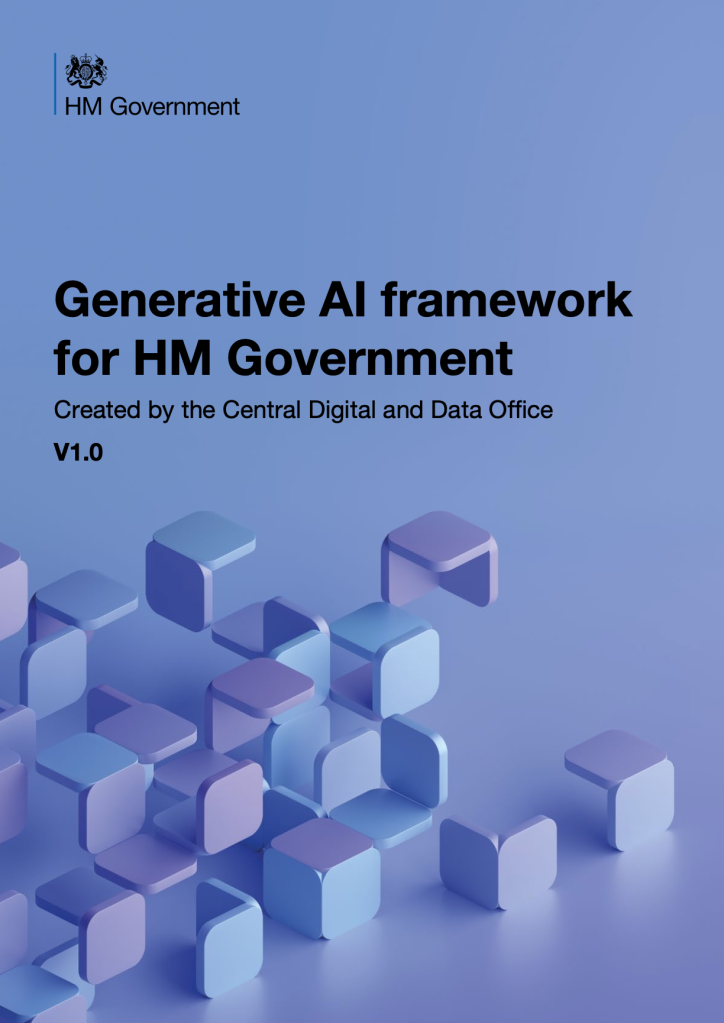
Generative AI has the potential to unlock significant productivity benefits. This framework, created by the Central Digital and Data Office of UK Government, aims to help readers understand generative AI, to guide anyone building generative AI solutions, and, most importantly, to lay out what must be taken into account to use generative AI safely and responsibly.
It is based on a set of ten principles which should be borne in mind in all generative AI projects.
Ten principles
- You know what generative AI is and what its limitations are.
- You use generative AI lawfully, ethically and responsibly.
- You know how to keep generative AI tools secure.
- You have meaningful human control at the right stage.
- You understand how to manage the full generative AI lifecycle.
- You use the right tool for the job.
- You are open and collaborative.
- You work with commercial colleagues from the start.
- You have the skills and expertise that you need to build and use generative AI.
- You use these principles alongside your organization’s policies and have the right assurance in place.
Applications of generative AI in government could be used to: speed up delivery of services (retrieving information faster), reduce staff workload (drafts of routine email responses or computer code), perform complicated tasks (review and summarize information), improve accessibility of government information (improving the readability), perform specialist tasks more cost-effectively (summarizing documentation or translating).
Building generative AI solutions
In a next section you get some practical steps you’ll need to take in building generative AI solutions, including defining the goal (identification of use cases and use cases you must avoid), building the team (multi-disciplinary, right skills), creating the generative AI support structure (AI strategy and adoption plan, AI principles, AI governance board, communication strategy, AI sourcing and partnership strategy), buying generative AI and building the solution (core concepts), patterns (public generative AI applications and web services, embedded generative AI applications, public generative AI APIs, local development, cloud solutions), picking your tools (decisions on your development stack), getting reliable results, testing generative AI solutions, and data management. For each step you get some practical recommendations too.
Using generative AI safely and responsibly
This section outlines the steps you’ll need to ensure that you build generative AI solutions in a safe and responsible way, taking account of legal considerations (issues, human rights, legislation), ethics (transparency and explainability, accountability and responsibility, fairness, bias and discrimination, Information quality and misinformation, keeping a human-in-the-loop), sustainability and environmental considerations, data protection and privacy (accountability, lawfulness, purpose limitation, transparency and individual rights, fairness, data minimization, storage limitation, human oversight, accuracy), security (prompt injection threats, data leakage, hallucinations), and governance (AI governance board or have AI representation on a governance board and an ethics committee, AI/ML systems inventory, program governance). For each step you get some practical recommendations too.
Conclusion. Even though the GenAI Framework is intended for the UK government, I believe that many organizations can benefit from this framework in developing a strategy on how to deal with generative AI applications.
To download: https://www.gov.uk/government/publications/generative-ai-framework-for-hmg (74 pages)















